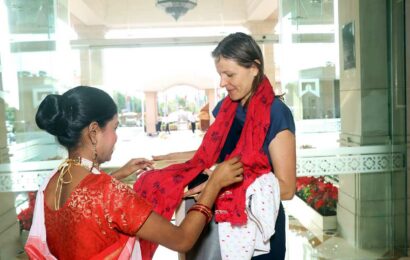At this poignant historic moment, one can only wish that institutions, which are not built by brick and mortar, but by rich Parliamentary traditions which have stood the test of time, are strengthened by all stakeholders, notes Rup Narayan Das, former joint secretary, Lok Sabha secretariat.
At a time when Parliament is being relocated to the new building from the iconic Parliament House, I am overwhelmed with nostalgia having served the institution for three decades and having witnessed its chequered current history.
It was mere destiny that took me to the great institution; there was no aspiration or conscious planning.
After my master’s degree in political science in 1985 from Delhi University, I joined its sibling Jawaharlal Nehru University for MPhil/PhD.
It was just by chance, that I stumbled upon the Lok Sabha secretariat for a career to earn a livelihood.
It so happened that once I was passing through Parliament House at lunch time and was feeling hungry; the idea occurred to me that I could enjoy a good thali at a pittance in the Parliament House reception.
The watch and ward staff wanted to know the purpose of my visit. I said I wanted an application for the post of research assistant for which I was eminently qualified.
That was my first foray into the hallowed building; there was no looking back.
I joined the secretariat in September 1985 and was asked to meet then Lok Sabha secretary general Dr Subhash C Kashyap.
He was seemingly impressed with me and observed in an official noting that he was looking forward to my promising future in the secretariat.
I was posted in the research and information division of the secretariat and was assigned to prepare draft speeches for dignitaries including the honourable Speaker for occasions like the Inter-Parliamentary Union, Commonwealth Parliamentary Association and for the visits of goodwill parliamentary delegations.
The first thing that comes to mind is the openness and accessibility to Parliament House during the mid-1980s as contrasted with the fortified and expansive Parliament House complex of today.
One couldn’t even imagine that there was thoroughfare within the Parliament House complex in 1960s.
It is a different matter that vehicular traffic on Delhi’s roads was very sparse. Maruti cars had not arrived; the only cars that dotted capital roads were the majestic Ambassador and the Fiat.
There was no security check for vehicles entering Parliament House. MPs travelled to Parliament House from their residences in South Avenue and North Avenue and Meena Bagh in DTC vans. DTC used to maintain a counter near the old reception office within Parliament House.
It was not Parliament House alone which was accessible, the MPs too were approachable.
I remember I once approached Professor Madhu Dandavate, who had just demitted office as railway minister, to sign on a railway requisition slip to book a ticket at the railway booking counter located within the Parliament House complex.
Professor Dandavate obliged me instantly. Such humility from a renowned public figure like Madhu Dandavate is a rare thing today.
Yet another memorable institution in Parliament House was the library, which was located within the precincts of the building before it was relocated to the Parliament Library Building a few years ago.
The library was regularly visited by veteran Parliamentarians like Atal Bihari Vajpayee, L K Advani, K R Narayanan, Professor Dandavate, Professor M L Sondhi to name a few.
Tables were reserved for them in the adjacent members Reading room.
Members used to read the books and journals with rapt attention and prepare notes for their participation in debates in the House.
I have seen Vajpayeeji evincing interest in the contents of books displayed at the library counter; the venerable MPs would reserve the books for their reading once the mandatory period of one week of their display ended.
The library reading room in the ground floor housed in the erstwhile ‘Princes Chamber’ used to be where members would come to browse through newspapers and magazines or submit their requests for reference material to be provided by the highly efficient Reference Services located just above the reading room.
Dr Manmohan Singh was a regular visitor to the reading room where punlications like The Times, London, The Economist, the Far Eastern Economic Review, the Economic and Political Weekly were displayed.
The reading room also displayed regional newspapers and English newspapers published from state capitals.
The courteous library staff were always eager to help and assist members and the members were equally respectful to the library staff.
What will be conspicuously missing in the new Parliament building is the grandeur of Central Hall, testimony to India’s pulsating democracy, where India’s first prime minister made his famous Tryst With Destiny speech on the eve of transfer of power, August 14/15, 1947.
Central Hall has enabled the President to address members of Parliament, belonging to members of both the Lok Sabha and Rajya Sabha at the commencement of the Lok Sabha after the general election and also at the beginning of the first session of the year, besides the joint sittings of the two Houses, when needed.
While the new Parliament House can accommodate members of both the Rajya Sabha and Lok Sabha, one wonders what will happen to the parliamentary tradition of enabling heads of State and governments to address Parliament.
At this poignant historic moment, one can only wish that institutions, which are not built by brick and mortar, but by rich Parliamentary traditions which have stood the test of time, are strengthened by all stakeholders.
Dr Rup Narayan Das is a former joint secretary of the Lok Sabha secretariat.
Feature Presentation: Aslam Hunani/Rediff.com
Source: Read Full Article




